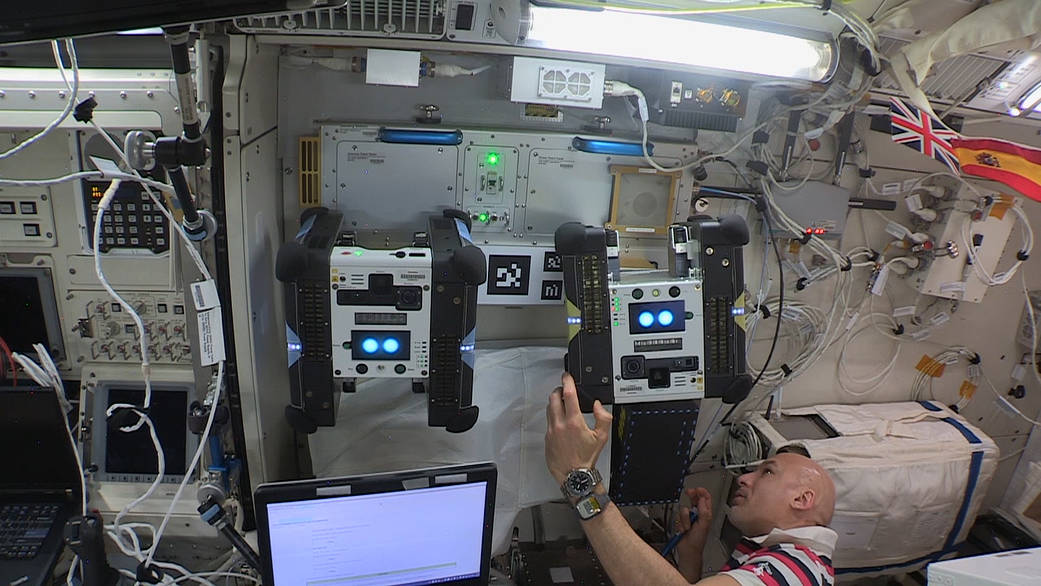The National Aeronautics and Space Administration (NASA) is seeking proposals from university research teams to develop unique, disruptive, and transformational space technologies that are currently at low technology readiness levels (TRL) but have the potential to lead to dramatic improvements at the system level. One of the topics of the Space Technology Research Grants (STRG) Program, Early Stage Innovations (ESI) appendix focuses on the advancement of additive manufacturing (AM) processing techniques for high-temperature materials.
Supporting education and research is a great way to advance the space exploration capabilities of NASA. In fact, according to the space agency, investment in innovative low-TRL research increases knowledge and capabilities in response to new questions and requirements; stimulates innovation, and allows more creative solutions to problems constrained by schedule and budget. Further suggesting that investment in fundamental research activities has historically benefited the United States by generating new industries and spin-off applications.
As an extension of the Space Technology Mission Directorate (STMD), the STRG Program is fostering the development of innovative, low-TRL technologies for advanced space systems. The goal of this particular endeavor is to accelerate the development of groundbreaking, high-risk but high-payoff, space technologies. It is not necessarily directed at a specific mission, but instead will support the future space exploration and science needs of NASA, other government agencies, and the commercial space sector; especially as plans for space colonization, lunar exploration, and future journeys to Mars advance.
Universities help drive many NASA projects today, researching everything from cube sat 3D printing to aerospace high-volume manufacturing. This new NASA solicitation is only for accredited US university proposals, and the research teams that apply for the STRG program can choose to focus on the advancement of AM processing techniques to improve properties of high-temperature refractory metals, particularly tungsten and tungsten alloys, as well as other refractory metals and alloys.
As described by the agency, all the submitted proposals working on additive manufacturing processing techniques for refractory metals should address at least one of the following research areas:
- Improving high-temperature material properties,
- Improving surface roughness from the AM process to minimize future post-processing needs,
- Altering surface characteristics to tailor emissivity and wetting properties (for example, to make them either hydrophobic or hydrophilic),
- Developing AM techniques to eliminate/minimize porosity and microcracking of AM parts,
- Developing post-processing techniques to eliminate/minimize the porosity and microcracking of AM parts,
- Developing techniques and processes to improve the grain structure of AM refractory metals,
- Developing AM techniques capable of fabricating with multiple metals at once, one of which is a refractory metal or alloy,
- Developing refractory alloys that provide optimal properties for parts fabricated by AM methods.
Due to their high melting points and density, refractory metals and alloys are capable of operating at extreme temperatures and have become the frontrunners for many high-temperature aerospace components, as well as other high-temperature applications, such as nuclear reactors, electric furnaces, and welding.
Of all the metals in pure form, tungsten has the highest melting point of 6,192°F (3,422°C) and is often alloyed with other metals for strength. As some of the toughest materials found in nature, refractory metals could be ideal for spacecraft applications that have to endure severe heat during space travel. Space shuttles, for example, used to face intense temperatures when re-entering the Earth’s atmosphere, as high as 3000°F (1649°C). If space adventurers expect to travel to Mars and beyond, spacecraft need to be protected, and this early-stage research could determine the bases for the future development of protection needed for safe space journeys.
The aerospace industry is increasingly turning to AM for thermal management systems that are capable of operating at extreme temperatures. The agency proposed integrated thermal management systems as one example where additive manufacturing plays a fundamental role in enabling technology. High-temperature thermal management systems are potentially disruptive to a wide range of high-temperature NASA applications such as wing leading-edge systems, solar probes, and Nuclear Thermal Propulsion (NTP); and can benefit from improvements in the fabrication of refractory metal casing materials.
During this early stage research, NASA is solely focused on manufacturing under Earth’s gravity, and there is still no mention of demonstrating additive manufacturing capabilities in space. However, we can probably expect that as this research moves forward, zero gravity fabrication will be of interest.
With a maximum award of $650,000 for a research period of three years or less, this research grant represents a great opportunity for academics focusing on AM processing techniques.
NASA considers that these investments create, fortify, and nurture the talent base of highly skilled engineers, scientists, and technologists to improve the country’s technological and economic competitiveness. The ESI Appendix challenges universities to examine the theoretical feasibility of new ideas and approaches that are critical to making science, space travel, and exploration more effective, affordable, and sustainable.
Historically black colleges and universities along with other minority-serving institutions are encouraged to submit proposals. Moreover, NASA encourages submission of ESI proposals by women, members of underrepresented minority groups, persons with disabilities, and faculty members who are early in their career.
As NASA seeks to develop unique, disruptive, and transformational space technologies, university researchers get a chance to participate in the next generation of space exploration efforts, that are a complement to many of the agency’s ongoing programs. The solicitation is available here and universities have time until May 20, 2020, to present their notice of intent, and until June 17, 2020, for proposals.
The post NASA Seeks Proposals to Advance AM Techniques for High Temperature Materials appeared first on 3DPrint.com | The Voice of 3D Printing / Additive Manufacturing.



